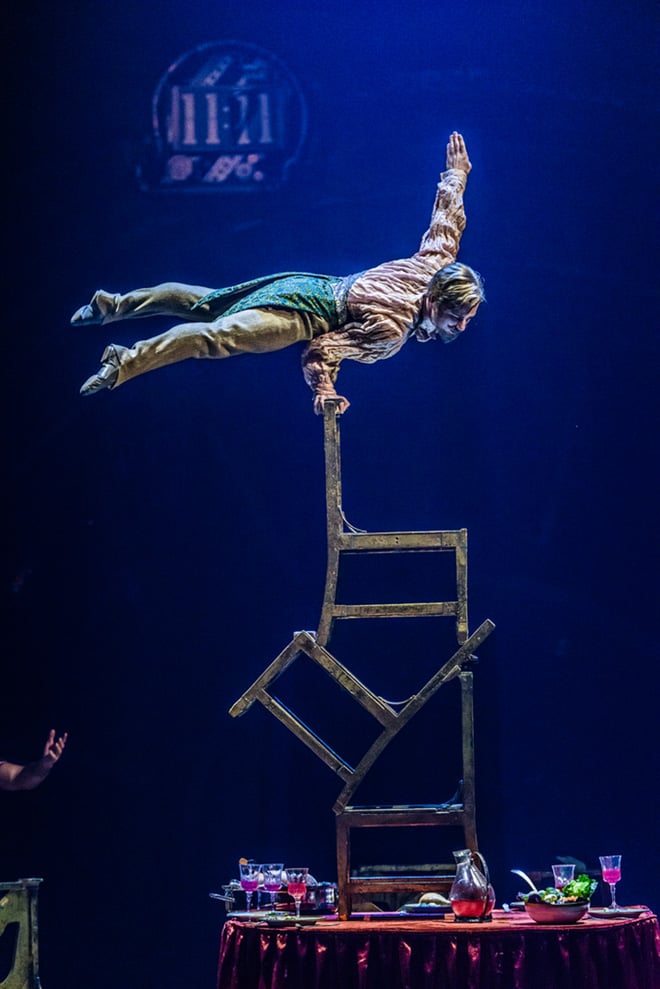The archetype is not unfamiliar: the reckless teenager, wrought with angst and a fierce lust for the unknown, who vows to abandon his or her small town for the adventure of the circus. To many, the circus is a symbol of freedom and liberation in a world of limitation, where even art has become teleological. As Stanford students, this world is not far from our own reality. Even in the arts, an immense pressure to succeed pervades student life. Creativity gets overshadowed by resume-building, stressing about future career prospects and conforming to the constraints of grant provisions and feasibility. In an academic environment as competitive as this one, it can be hard to find a niche in which it is okay to be, well, weird.
As if to resist this trend, Stanford’s theater department (TAPS) has become increasingly diverse in recent years. New classes offered push for the exploration of different mediums and genres distinct from classical performance. Professor Helen Paris’ class, TAPS 101P (Intro to Directing and Devising Theatre), pushes students to think outside the box and examine the “relationship between form and content, aesthetics, proximity, audience [and] space.” TAPS 144, entitled “Puppetry with a Twist,” gives students the opportunity to work with renowned puppeteer Basil Twist to cultivate their own puppetry performance piece. Even a unique array of faculty interests — such as Dr. Branislav Jakovljevic’s work in the avant-garde and in political theater — encourage bold art.

But despite all these strides forward, there is one genre of theater which continues to be overlooked in most modern universities: circus.
Representing a break from traditional theater, circus is a style of performance with a sense of autonomy independent from Shakespearean storylines and the traditional performance skillset of acting, singing and dancing. Uniting art with physical ability and training, circus encompasses a number of feats, including juggling, vaulting, hoop diving, tightrope walking, contortion, tumbling, poi spinning, knife throwing, trampolining and many, many more. As theatre has evolved over time, modern circuses such as Cirque du Soleil and Les 7 Doigts de la Main have moved away from animal-related stunts and now focus entirely on the acrobatic talents of their performers and the beauty that can be found in uniting the wonders of the body with the creativity of the mind.
Stanford’s Aerial Arts Program gave students the opportunity to dabble in one of the many performance techniques featured in modern circus. Since its abolition in 2013, circus has been one of the only performance genres not offered here on campus. A petition written by members of the student body to reinstate the program argued that exposure to the aerial arts “builds self-confidence and encourages self-expression through unique, creative and performative means,” and many student testimonies describe the program to be one of the most rewarding parts of their Stanford experience. Additionally, the university has discontinued every circus-related course offered in previous years, including PHYSICS 92SI (Physics of the Circus) and DANCE 142 (Circus for Community Building and Social Change).
Of course, there are many programs outside of Stanford that allow one to explore the circus as a viable professional and artistic field. However, there is a vibrancy that the spirit of adventure associated with circus may bring to the Stanford community. Stanford, with its emphasis on ambition and ingenuity, serves as a gleaming reminder of what the mind is capable of. But in the world of academia, it is easy to lose other elements of ourselves in the pursuit of intellectualism. The brain is privileged over the body, and the body is forgotten. Especially now, in a time on our campus in which violence against bodies is becoming commonplace (the multiple assault cases which have come to light recently, the battle over divestment, even the general disregard of our own physical health in the whirlwind of midterm season), a celebration of the body is long overdue.

Though creating a circus program here at Stanford certainly wouldn’t be a goal for the foreseeable future, there are many ways to make room for Stanford artists and athletes to experience the many potentials which exist in the world of circus. Reinstating the few classes Stanford has offered in the past, providing more circus-related training through the athletic department and including the circus in discussions about career prospects in the arts would all help increase Stanford’s already expanding theatrical repertoire.
Stanford, in all its academic glory, may have something to learn from the art of circus: that there is value in putting down the laptop for an hour or two, giving the mind a break and using the body for something other than rolling out of bed, slapping on makeup and biking to class. As a genre, circus continues to provoke, inspire and evolve as a form of performance art. Perhaps it’s time for Stanford to evolve with it.
Contact Madelaine Bixler at mbixler ‘at’ stanford.edu.
